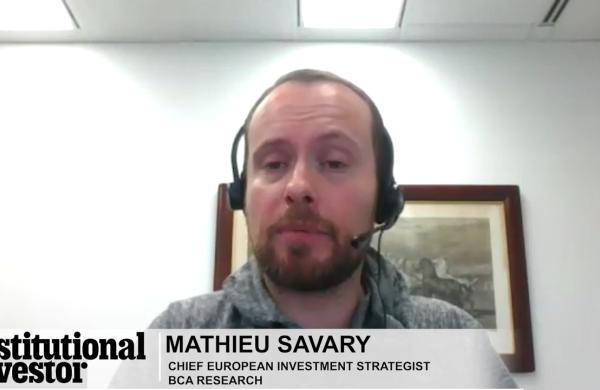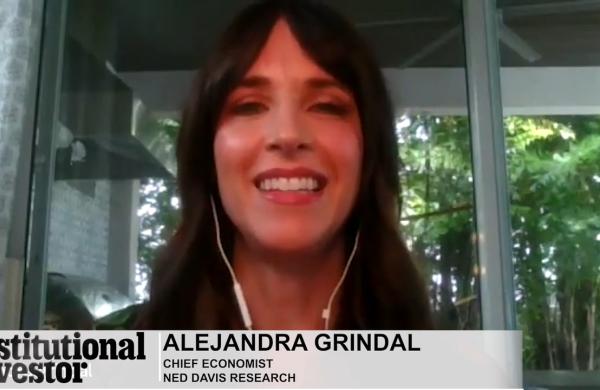Decoupling? Hardly. The old adage has it that when the U.S. sneezes, the rest of the world catches cold. Today, with the U.S. economy apparently coming down with a case of full-blown flu, other countries are likely to have a hard time maintaining their economic health, sovereign credit experts say.
The U.S.’s credit rating slips slightly from six months ago, by 0.3 point to 93.8 on a scale of zero to 100, according to Institutional Investor’s exclusive Country Credit survey, but much of the developing world suffers steeper falls. South and Southeast Asian nations see their ratings drop by 1.8 points, on average, to 30.8 points; Latin American and Caribbean countries fall by 1.3 points, to 43.4; and Sub-Saharan Africa falls a full point — the minimum amount considered statistically significant — to 24.4.
There are signs of relative strength, to be sure. The average rating of countries in Eastern Europe and Central Asia climbs a strong 1.4 points, to 49.5; the Middle East & North Africa rises 1.2, to 55.3; East Asia gains 0.8 point, to 85.6; and Western Europe edges up 0.2 point, to 91.1. But after several years of impressive gains in global creditworthiness, the mood today is considerably more subdued.
Overall the global average rating, which surged by 5.0 points over the past four years to hit a peak of 46.9 in September, falls 0.3 point, to 46.6.
As America’s well-documented financial travails unfold, economists are immersed in debates full of railroad metaphors: Is the U.S. still the only global economic locomotive, or has China started to pull the load? How much of the rest of the world is part of this U.S. train, and who might have been decoupled? The answers, according to the scores of country risk analysts and economists at financial institutions around the world who participate in this survey, are clear: When the U.S. train leaves the station, most everyone is still on board.
“Everybody knows that the U.S. remains the preeminent industrialized nation, the biggest economy in the world, and it is having problems,” says Hans-Werner Detrez, a senior vice president at Commerzbank in Frankfurt. “The U.S. subprime crisis and current-account deficit are the main sources of concern around the world.”
China may be lending support to the global economy with its double-digit growth rate, but as one New York–based banker puts it: “Remember, it is also a big exporter to the U.S., so a U.S. slowdown means a slowdown in China — perhaps to a growth rate of only 8.5 percent. But that means many countries suffer a double whammy of reduced demand from the U.S. and from China as well.”
Such concerns help drive down credit ratings across South and Southeast Asia. Fourteen of the 23 countries in the Asia-Pacific/South & East region fall by a point or more; only one rises by that much. To be sure, it is politics rather than economics that pushes Pakistan down 5.9 points, Afghanistan 3.2 points and Bhutan a breathtaking 8.9 points, the biggest decline in the survey. But the prospects of reduced trade and slower growth do cause drops in Thailand (down 1.0 point), Indonesia (down 2.0 points), Bangladesh (down 2.1 points) and the Philippines (down 2.5 points).
Among the more developed Asian economies, however, it is a different story: There are gains all around for Japan (up 1.6 points), New Zealand (up 1.4 points), Hong Kong (up 1.3 points) and Australia (up 1.0 point).
Asia’s emerging dynamos see a dramatic slowing in the improvement of their creditworthiness. China’s rating rises 0.6 point, to 76.5; during the preceding six months, the country’s rating jumped 2.0 points. India edges up 0.4 point, to 62.7; its rating advanced by 2.4 points in the previous six months.
Latin America/Caribbean has been afflicted with the same malaise as Asia. After reaching 44.7 in the last survey, its highest score since 1980, this time it falls 1.3 points. Some 17 of the 27 countries decline by a point or more, while only two rise by that amount — Trinidad & Tobago, an oil producer, and Panama.
“There’s a concern about a weakening of demand from the big buyer up north,” says the New York banker. That is enough to hurt Peru (down 0.5 point), Brazil (off 0.6 point), Mexico (off 0.7 point), Argentina (down 2.5 points) and Jamaica (down 2.6 points).
“When things are looking a little bit harder, those countries suffer a lot,” says Robert De Iure, a country risk economist at National Australia Bank in Melbourne.
Even Venezuela is not immune. The country may have its oil, but with President Hugo Chávez appearing politically vulnerable after losing a December referendum on his bid for stronger presidential powers, Venezuela’s rating falls 2.0 points, to 43.1.
These days “everybody is guilty until proven otherwise,” says Fabio Knijnik, an investment strategist at BES Investimento do Brasil in São Paulo.
Consider Africa. Its commodities revenues had been booming, thanks to strong prices and an enormous buyer, China. The Chinese have also been pumping investment money into Africa to solidify supply lines. That boosted Sub-Saharan Africa’s rating to 25.4 in the last survey, the highest level in a quarter century. But this time around the region loses a full point, as 24 countries fall by a point or more and only four rise by as much.
The usual dismal local political factors affect several African countries. Commerzbank’s Detrez also notes that oil-importing countries are having to pay a higher price. But the leitmotiv is a sense that a global slowdown will inevitably diminish demand for Africa’s commodities.
Oil exporters, on the other hand, fuel strong rises in credit ratings in the Middle East & North Africa. The seven major oil exporters at the top of that region’s list of 19 countries rise strongly, including gains of 3.5 points for the United Arab Emirates and 3.2 points for Saudi Arabia. Libya also rises a smart 1.3 points. And Jordan and Israel are up by 1.0 and 0.9 point, respectively. Israel’s economy has been booming, and Jordan renegotiated its debt with the Paris Club, notes one Danish banker. In addition, he says, “the political risks have been eased somewhat because the U.S.-Iran conflict seems to be on hold.”
Eastern Europe/Central Asia posts solid gains, as 15 of 29 countries rise by a point or more and only three fall by that amount. All three Baltic countries decline because, notwithstanding strong economies, their fiscal deficits are relatively high, says Detrez. But Russia rises by 1.9 points, as oil revenues trumped political concerns ahead of the March presidential election, which ratified the handover of power from Vladimir Putin to his handpicked successor, Dmitry Medvedev.
Elsewhere in the region there is a great deal of repricing of risk, Knijnik says, as respondents seek to decide what they think about the former Yugoslavia. There are sizable gains by Montenegro (up 4.4 points), Serbia (up 4.2 points), Macedonia (up 2.6 points) and Bosnia & Herzegovina (up 1.7 points).
For Central Asia countries the watchword remains oil. Kyrgyzstan rises a startling 5.5 points, Turkmenistan climbs 1.9 points, and Uzbekistan is up 0.9 point. But Kazakhstan, where banks are being squeezed by the global credit crunch, falls 0.2 point.
One of the things propping up Eastern Europe has been the fact that its major trade and investment links are more with the European Union than with the U.S.
And despite the developing world’s problems, Western Europe’s average rating rises modestly, as two of the 19 countries gain at least one point and two fall by that much. The two notable declines are Italy (down 1.3 points), which is suffering from renewed political disarray following the January collapse of the center-left government headed by Romano Prodi, and Spain (down 1.5 points), which has been suffering from its own housing market problems.
Meanwhile, the U.S. is once again the unmoved (relatively speaking) mover, falling a modest 0.3 point even as its subprime crisis and its prospect of recession hammer much of the rest of the world. “You have a massive flight to quality, and that means Treasuries, which are still considered the safest asset in the world,” Knijnik says. “People are looking for a safe harbor in the middle of uncertainty.”
As long as the U.S. remains sluggish, there will be pain in Asia and Latin America, and Africa will feel the impact as well. Moreover, Eastern Europe may have emerged unscathed this time, but Thomas Oliver, a sovereign credit analyst at Schroders in London, sounds a note of caution. “I would think the next survey will be even more bearish,” he says.
National Australia Bank’s De Iure is also pessimistic. “The U.S. economy is going to slow down. We’re not forecasting a recession, but even the most optimistic forecasters think the U.S. growth rate is going to decline.”
And it still seems to be the case that if the global economic locomotive runs out of steam, the rest of the train will slow down too.





